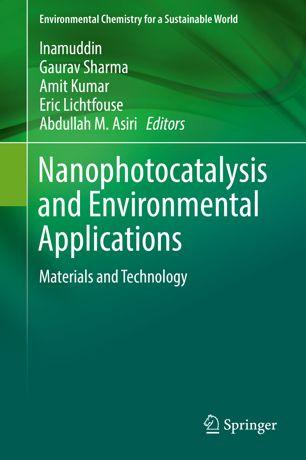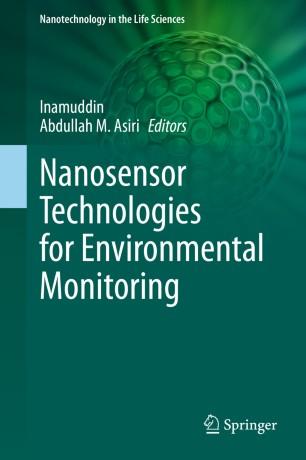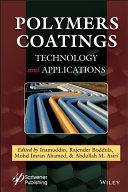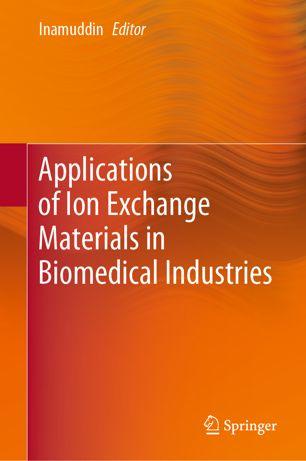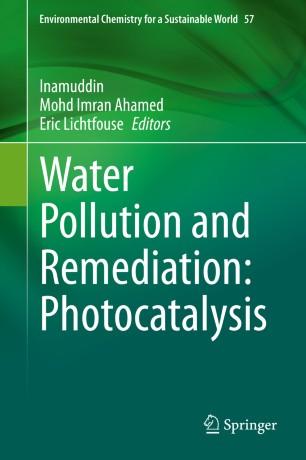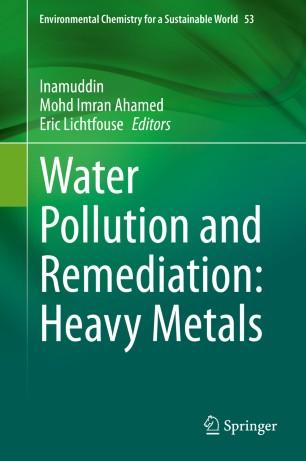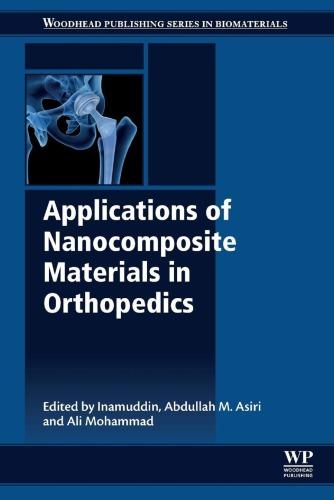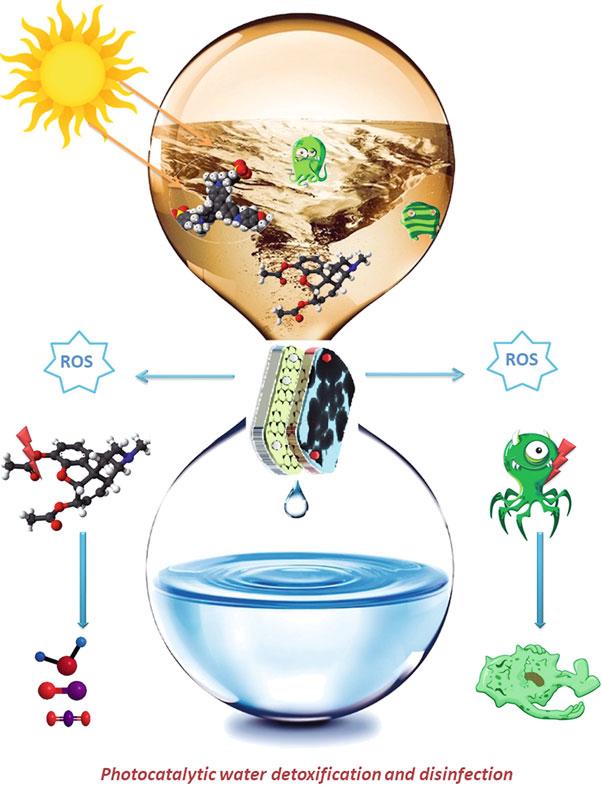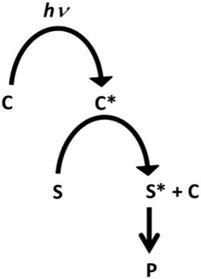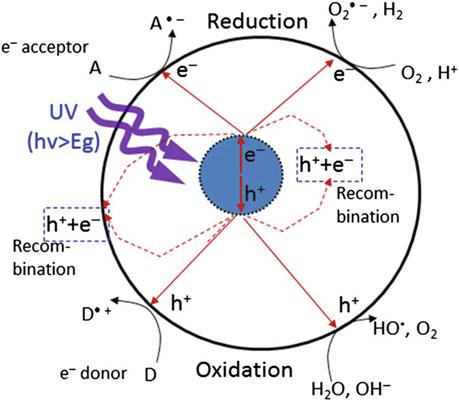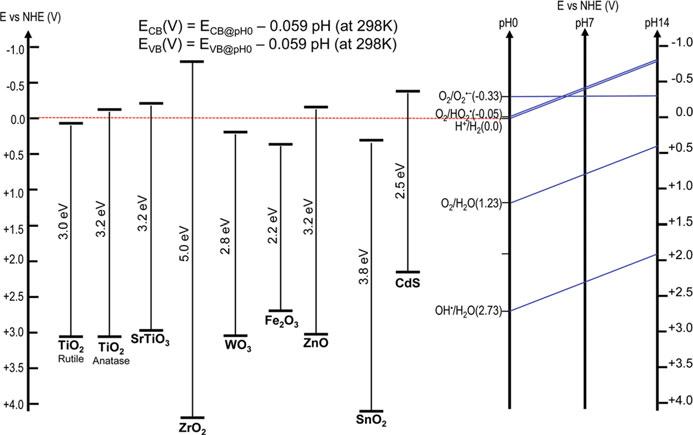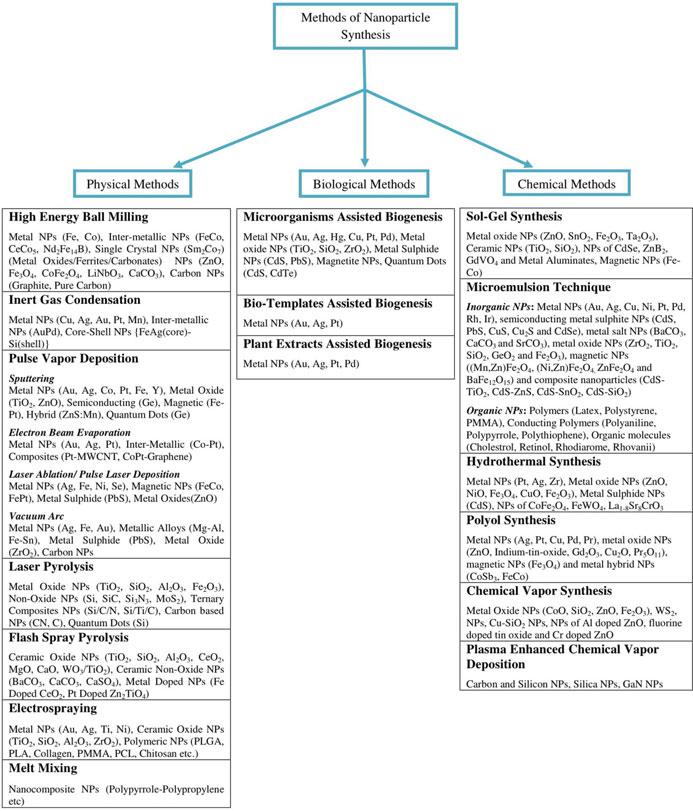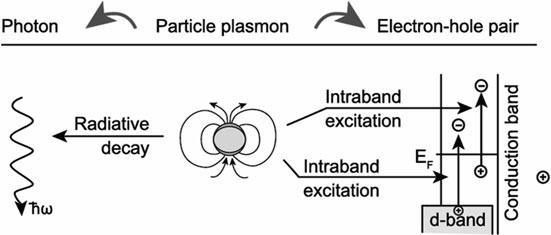EnvironmentalChemistryforaSustainable World
Volume30
Serieseditors
EricLichtfouse,Aix-MarseilleUniversity,CEREGE,CNRS,IRD,INRA,Coll France,Aix-en-Provence,France
JanSchwarzbauer,RWTHAachenUniversity,Aachen,Germany
DidierRobert,CNRS,EuropeanLaboratoryforCatalysisandSurfaceSciences, Saint-Avold,France
Books
EnvironmentalChemistry
http://www.springer.com/978-3-540-22860-8
OrganicContaminantsinRiverineandGroundwaterSystems http://www.springer.com/978-3-540-31169-0
SustainableAgriculture
Volume1: http://www.springer.com/978-90-481-2665-1
Volume2: http://www.springer.com/978-94-007-0393-3
Bookseries
EnvironmentalChemistryforaSustainableWorld http://www.springer.com/series/11480
SustainableAgricultureReviews
http://www.springer.com/series/8380
Journals
EnvironmentalChemistryLetters http://www.springer.com/10311
Moreinformationaboutthisseriesat http://www.springer.com/series/11480
Inamuddin • AbdullahM.Asiri • EricLichtfouse
Editors
Nanophotocatalysisand EnvironmentalApplications
DetoxificationandDisinfection
Editors
Inamuddin
ChemistryDepartment, FacultyofScience
KingAbdulazizUniversity Jeddah,SaudiArabia
EricLichtfouse
CEREGE,CNRS,IRD,INRA, CollFrance
Aix-MarseilleUniversity
Aix-en-Provence,France
AbdullahM.Asiri
ChemistryDepartment, FacultyofScience
KingAbdulazizUniversity Jeddah,SaudiArabia
ISSN2213-7114ISSN2213-7122(electronic) EnvironmentalChemistryforaSustainableWorld ISBN978-3-030-12618-6ISBN978-3-030-12619-3(eBook) https://doi.org/10.1007/978-3-030-12619-3
© SpringerNatureSwitzerlandAG2020
Thisworkissubjecttocopyright.AllrightsarereservedbythePublisher,whetherthewholeorpartofthe materialisconcerned,specificallytherightsoftranslation,reprinting,reuseofillustrations,recitation, broadcasting,reproductiononmicrofilmsorinanyotherphysicalway,andtransmissionorinformation storageandretrieval,electronicadaptation,computersoftware,orbysimilarordissimilarmethodology nowknownorhereafterdeveloped.
Theuseofgeneraldescriptivenames,registerednames,trademarks,servicemarks,etc.inthispublication doesnotimply,evenintheabsenceofaspecificstatement,thatsuchnamesareexemptfromtherelevant protectivelawsandregulationsandthereforefreeforgeneraluse.
Thepublisher,theauthors,andtheeditorsaresafetoassumethattheadviceandinformationinthis bookarebelievedtobetrueandaccurateatthedateofpublication.Neitherthepublishernortheauthorsor theeditorsgiveawarranty,expressorimplied,withrespecttothematerialcontainedhereinorforany errorsoromissionsthatmayhavebeenmade.Thepublisherremainsneutralwithregardtojurisdictional claimsinpublishedmapsandinstitutionalaffiliations.
ThisSpringerimprintispublishedbytheregisteredcompanySpringerNatureSwitzerlandAG Theregisteredcompanyaddressis:Gewerbestrasse11,6330Cham,Switzerland
Preface
Intherecentdecades,theworldhasencounteredsevereenvironmentalchallengesin termsofwaterpollution,climatechange,andincreasinginfectiousdiseases.The irregularspeedandquantumatwhichanthropogenicactivitiesaregrowinghave endedupinthewastingofresources,exposuretotoxins,andpollutionriseallover theworld.Theseubiquitousproblemsthroughouttheglobehavebeenworsenedin thedevelopingpartoftheworldduetotheindustrialrevolutionandpoormonitoring andcontrolofanthropogenicactivities.
Thedischargeofwastewaterisincreasingintowaterbodiesandonland,and varietiesofnewemergingnonregulatedpollutantsareenteringintothewaterbodies. Thesevereshortageofpotablewaterrequiresmorefocusonrecycling,remediation, andreuse.Conventionalpollutanttreatmentanddisinfectionmethodshavetheirown disadvantageswithefficiencyandcostissues.Themostdigni fiedsolutionsfor variousenvironmentalissuesareresourcemanagementandcost-effectivetechnologiesforpollutionmitigationanddisinfection.Amongvariouscost-effectiveand viabletechnologiesusedformitigatingenvironmentaldetoxification,advanced oxidationprocess-basedphotocatalysisisthemostpioneerone.Principally,itis indeeda “green” technologythrivingonlightespeciallyonnaturallyandabundantly availablesolarenergyandoxygenfromairunderambientconditions.
Thephenomenathatcameintothenewswith “Honda-Fujishima” effectprovedto beoneofmosteffectivetechniquestodegradepersistentandemergingcontaminants fromaqueousmediumutilizinglight.Afterthesecondarytreatmentofpolluted water,photocatalysisistrustedforthenextstageasitclaimstomineralizethe complexorganicpollutantsintowaterandcarbondioxideusinghydroxyland superoxideradicals.Thescientificcommunity,aswellastheindustrialplayers, hasthenutilizedthistothemaximumwithcontinuousinnovationsinthedesigning ofphotocatalyticmaterials,pilot-scaleexperiments,andpracticaltreatmentofwater usingnaturalsolarlight.
However,variousnewsourcesofproduction,disposalsfrommedicineand plasticsindustry,agriculture,andhouseholdconvenienceshaveledtohugewidespreadtoxicpollutants.Ithasbeenanissueofconcernforthegeneralpublicaswell asscientistsandgovernments.Onabroaderline,theseareclassifiedaspharmaceuticals,personalcareproducts,andendocrinedisruptors.Thesehavechallengedthe existing “star” photocatalyticmaterialsandmethodologies.Newandhighly advancedphotocatalystsandimprovementinexistingphotocatalytictechnologies arethusrequired.Therefore,continuousresearchisgoingonvarioussolar-active materialswithmultiprongedcapabilities.
Anotherissueofenvironmentalconcernisincreasingtowardbiohazardssuchas bacteria,virus,andothermicroorganismsindrinkingwaterresources.Thishas increasedtheriskofdeadlydiseasesinhumansandaquaticspecies.Conventional disinfectionmethodsarefailedasmanyofthesemicrobesdevelopedresistanceto ultraviolet,chlorination,andantibioticstoo.Semiconductor-basedphotocatalysisis provedtobebeneficialforwaterdisinfection,i.e.,inactivationandphoto-killingof microbes via generationofreactiveoxygenspecies.Hence,photocatalysishasbeen usedforenvironmentaldetoxificationanddisinfectionwhichincludesorganic pollutants,heavymetal,inorganiccontaminantsremoval,andmicrobialkilling.
Shiftingfromsinglephotocatalyststoheterojunctions,nanocomposites,molecularly imprintedcatalysts,sensitizednanomaterials,photocatalyticmembranes,and heterostructureshasledtobetterresultsandhigherefficiencies.
NanophotocatalysisandEnvironmentalApplications:DetoxificationandDisinfection focusesonexistingandnovelapplicationsofphotocatalystsinenvironmental detoxi ficationaswellasdisinfection.Photodegradationoforganicandinorganic pollutantsincludingdyes,drugs,pesticides,hormones,heavymetals,antibiotics, microbes,bacteria,fungi,andcarcinogensisdiscussedonvariousnovel photocatalystssuchasbiomass-andphosphor-basedphotocatalysts,nanocarbonandpolymer-supportednanostructures,ferritenanoparticles,magneticmaterials,etc. Basedonthematictopics,thebookeditioncontainsthefollowing10chapters:
Chapter 1 intendstoexploreanoverviewofthemechanismsandpromising researchactivitiesonphotocatalyticnanoparticle-assistedheavymetal detoxi fication.
Chapter 2 discussestheeffectofparametersandpathways(transformation products)ofsolarphotocatalysisofantibioticgroupsusuallyfoundinaquatic systemssuchasmacrolides,sulfones,lincosamides,andquinolone.
Chapter 3 addressestheadvancementstoovercomethedrawbacksofpure semiconductoroxidebytheincorporationofbiomass-derivedcarbonaceousmaterialsforthefabricationphotocatalystsusedtoremoveorganicpollutantsfromwater. Thischapteralsohighlightsthetypes,properties,andconversionofbiomassinto biochar,activatedcarbon,oranyothercarbonaceousmaterials.Thepreparationof biomass-basedsupportandthemechanismsofbiomass-derivedphotocatalysisare discussedindetail.
Chapter 4 aimstohighlightrecentadvancementsintheapplicationof Bi-photocatalystsanditsheterostructuresusedinenvironmentalprotection.The reviewexploresphotocatalyticdegradationofantibiotics,nonsteroidalantiinflammatorydrugs,beta-blockers,anticonvulsant,hormones,resorcinol, bisphenolA,andderivativesavailableinaqueoussystems.Theapplicationsof Bi-basedphotocatalystsfortreatingNOx,watersplitting,andCO2 reductionto COandCH4 arediscussed.
Chapter 5 describessolutionsforenhancingthephotondistributioninsidethe photoreactorsusinginorganicandorganiclight-emittingparticles(phosphors)) coupledwithphotocatalysts.Thischapteralsounderlinesthedifferencebetween inorganicparticleshavingdown-conversion,up-conversion,andlongafterglow luminescenceproperties.Additionally,theuseofup-conversionorganicphosphors isproposed.Finally,someexamplesconcerningtheuseofsemiconductorscoupled withdifferentphotoluminescentmaterialsintheremovalofpollutantsfromwater andwastewaterarediscussed.
Chapter 6 explorestheapplicationsofTiO2 nanostructures(0Dto3D) functionalizedwithvariouspolymericandnanocarbonhybridphotocatalyticmaterialsforphotodegradationofchemicalpollutants.Variouschemicalsynthesis methods,surfacemodificationwithvariouspolymersandnanostructuredcarbons, composition,morphologicalstructures,growthmechanism,physicochemicalproperties,electronicandopticalcharacteristics,andphotocatalyticmechanismof
variousheterostructuredTiO2-basedphotocatalystsarediscussedindetails.The futurechallengesinthe fieldsofphotocatalyticenvironmentalremediationand hydrogengenerationarealsomentioned.
Chapter 7 givesabriefintroductionofnanomaterialsincludingtheirclassification,shapeandstructure,typeofnanomaterials,andapplicationsindegradationof recalcitrantorganiccontaminants.Theprocessintensificationusingsono-hybrid advancedoxidationprocessesofsono-photocatalysisandheterogeneousFentonlikereactionforwastewatertreatmentisdiscussed.
Chapter 8 exploresabriefreviewofvariousmagnetic-basedphotocatalytic nanomaterialsusedforphotocatalyticdisinfectionanddegradationprocesses.The factorsinfluencingthecatalyticperformancealongwiththedisinfectionmechanisms arealsodiscussed.
Chapter 9 presentsareviewoftheliteratureonthevarioustypesofphotocatalytic materials,theirmechanismofactionforphotocatalyticwaterdisinfection,and photocatalystswithmicrobialactivity.
Chapter 10 discussestheimportanceofphotocatalystsandtheirmedicinalapplicationinthedailylifeofhumanbeings.Thepropertiesofphotocatalystsinrelation tothenanoscalearediscussed.Themedicinalapplicationsofphotocatalystssuchas antifungal,antimicrobial,anti-cancerogenicarealsodiscussedindetail.
Thisbookistheconsequenceofthecommendablecooperationofauthorsfrom variousinterdisciplinary fieldsofscience.Itthoroughlyexaminesthemostgenerous, startto finish,andforefrontresearchandreviews.Wearethankfultoallthe contributingauthorsandtheircoauthorsfortheirregardedcommitment.Wemay moreoverneedtothankallcopyrightholders,authors,andotherindividualswho agreedtousetheir figures,tables,andschemes.Yeteveryefforthasbeenmadeto securethecopyrightapprovalsfromtheindividualproprietorstoconsolidatereferencetotheimitatedmaterials,weshouldneedtoofferoursincereproclamationsof disappointmenttoanycopyrightholderifunintentionallytheirbenefitisbeing infringed.
Contents
1RoleofNano-photocatalysisinHeavyMetalDetoxification .......1 AnkitaMazumder,SouptikBhattacharya,andChiranjibBhattacharjee
2SolarPhotocatalysisApplicationstoAntibioticDegradationin AquaticSystems .......................................35 MargaritaJiménez-TototzintleandEnricoMendesSaggioro
3Biomass-BasedPhotocatalystsforEnvironmentalApplications ....55 YeanLingPang,ChinWoeiLim,KatrinaPuiYeeShak,StevenLim, WaiChongCheam,ChaiHoonKoo,andAhmadZuhairiAbdullah
4ApplicationofBismuth-BasedPhotocatalystsinEnvironmental Protection ............................................87 EwaMariaSiedlecka
5Phosphors-BasedPhotocatalystsforWastewaterTreatment ......119 OlgaSacco,VincenzoVaiano,andDianaSannino
6Nanocarbons-SupportedandPolymers-SupportedTitaniumDioxide NanostructuresasEfficientPhotocatalystsforRemediationof ContaminatedWastewaterandHydrogenProduction ...........139 KakarlaRaghavaReddy,M.S.Jyothi,A.V.Raghu,V.Sadhu, S.Naveen,andTejrajM.Aminabhavi
7InvestigationinSono-photocatalysisProcessUsingDopedCatalyst andFerriteNanoparticlesforWastewaterTreatment ...........171 SankarChakma,G.KumaravelDinesh,SatadruChakraborty, andVijayanandS.Moholkar
8Magnetic-BasedPhotocatalystforAntibacterialApplication andCatalyticPerformance ...............................195 Sze-MunLam,Jin-ChungSin,andAbdulRahmanMohamed
9AntimicrobialActivitiesofPhotocatalysts forWaterDisinfection ...................................217 VeroniceSlusarski-Santana,LeilaDeniseFiorentin-Ferrari, andMônicaLadyFiorese
10MedicinalApplicationsofPhotocatalysts .....................245 BusraBalli,AysenurAygun,andFatihSen Index
Contributors
AhmadZuhairiAbdullah SchoolofChemicalEngineering,UniversitiSains Malaysia,NibongTebal,Penang,Malaysia
TejrajM.Aminabhavi SoniyaCollegeofPharmacy,Dharwad,Karnataka,India
AysenurAygun SenResearchGroup,BiochemistryDepartment,FacultyofArts andScience,DumlupınarUniversity,Kütahya,Turkey
BusraBalli SenResearchGroup,BiochemistryDepartment,FacultyofArtsand Science,DumlupınarUniversity,Kütahya,Turkey
ChiranjibBhattacharjee DepartmentofChemicalEngineering,JadavpurUniversity,Kolkata,India
SouptikBhattacharya DepartmentofChemicalEngineering,JadavpurUniversity,Kolkata,India
SankarChakma DepartmentofChemicalEngineering,IndianInstituteofScience EducationandResearchBhopal,Bhopal,MadhyaPradesh,India
SatadruChakraborty DepartmentofChemicalEngineering,IndianInstituteof ScienceEducationandResearchBhopal,Bhopal,MadhyaPradesh,India
WaiChongCheam DepartmentofChemicalEngineering,LeeKongChianFacultyofEngineeringandScience,UniversitiTunkuAbdulRahman,Kajang, Selangor,Malaysia
G.KumaravelDinesh DepartmentofChemicalEngineering,IndianInstituteof ScienceEducationandResearchBhopal,Bhopal,MadhyaPradesh,India
LeilaDeniseFiorentin-Ferrari DepartmentofChemicalEngineering,West ParanáStateUniversity,Toledo,Paraná,Brazil
MônicaLadyFiorese DepartmentofChemicalEngineering,WestParanáState University,Toledo,Paraná,Brazil
MargaritaJiménez-Tototzintle SanitationandEnvironmentHealthDepartment, NationalSchoolofPublicHealth,OswaldoCruzFoundation,RiodeJaneiro,RJ, Brazil
M.S.Jyothi DepartmentofBasicSciences,SchoolofEngineeringandTechnology,JAINDeemed-to-beUniversity,Bangalore,Karnataka,India
ChaiHoonKoo DepartmentofCivilEngineering,LeeKongChianFacultyof EngineeringandScience,UniversitiTunkuAbdulRahman,Kajang,Selangor, Malaysia
Sze-MunLam DepartmentofEnvironmentalEngineering,FacultyofEngineering andGreenTechnology,UniversitiTunkuAbdulRahman,Kampar,Perak,Malaysia
ChinWoeiLim DepartmentofChemicalEngineering,LeeKongChianFacultyof EngineeringandScience,UniversitiTunkuAbdulRahman,Kajang,Selangor, Malaysia
StevenLim DepartmentofChemicalEngineering,LeeKongChianFacultyof EngineeringandScience,UniversitiTunkuAbdulRahman,Kajang,Selangor, Malaysia
AnkitaMazumder DepartmentofChemicalEngineering,JadavpurUniversity, Kolkata,India
AbdulRahmanMohamed SchoolofChemicalEngineering,UniversitiSains Malayisia,NibongTebal,PulauPinang,Malaysia
VijayanandS.Moholkar DepartmentofChemicalEngineering,IndianInstituteof TechnologyGuwahati,Guwahati,Assam,India
S.Naveen DepartmentofBasicSciences,SchoolofEngineeringandTechnology, JAINDeemed-to-beUniversity,Bangalore,Karnataka,India
YeanLingPang DepartmentofChemicalEngineering,LeeKongChianFacultyof EngineeringandScience,UniversitiTunkuAbdulRahman,Kajang,Selangor, Malaysia
A.V.Raghu DepartmentofBasicSciences,SchoolofEngineeringandTechnology,JAINDeemed-to-beUniversity,Bangalore,Karnataka,India
KakarlaRaghavaReddy SchoolofChemical&BiomolecularEngineering,The UniversityofSydney,Sydney,NSW,Australia
OlgaSacco DepartmentofIndustrialEngineering,UniversityofSalerno,Fisciano, SA,Italy
V.Sadhu SchoolofPhysicalSciences,BanasthaliVidyapith,Banasthali,Rajasthan,India
EnricoMendesSaggioro SanitationandEnvironmentHealthDepartment, NationalSchoolofPublicHealth,OswaldoCruzFoundation,RiodeJaneiro,RJ, Brazil
DianaSannino DepartmentofIndustrialEngineering,UniversityofSalerno, Fisciano,SA,Italy
FatihSen SenResearchGroup,BiochemistryDepartment,FacultyofArtsand Science,DumlupınarUniversity,Kütahya,Turkey
KatrinaPuiYeeShak DepartmentofChemicalEngineering,LeeKongChian FacultyofEngineeringandScience,UniversitiTunkuAbdulRahman,Kajang, Selangor,Malaysia
EwaMariaSiedlecka DepartmentofChemistry,UniversityofGdańsk,Gdańsk, Poland
Jin-ChungSin DepartmentofPetrochemicalEngineering,FacultyofEngineering andGreenTechnology,UniversitiTunkuAbdulRahman,Kampar,Perak,Malaysia
VeroniceSlusarski-Santana DepartmentofChemicalEngineering,WestParaná StateUniversity,Toledo,Paraná,Brazil
VincenzoVaiano DepartmentofIndustrialEngineering,UniversityofSalerno, Fisciano,SA,Italy
Chapter1
RoleofNano-photocatalysisinHeavyMetal Detoxification
AnkitaMazumder,SouptikBhattacharya,andChiranjibBhattacharjee
Contents
1.1Introduction. ...............................................................................2
1.2HeavyMetalsandTheirToxicologicalEffects ...........................................4 1.2.1Cadmium..........................................................................4
1.2.2Chromium.........................................................................5
1.2.3Copper.
1.3OverviewofPhotocatalysis...............................................................7
1.4MechanismofPhotocatalysis.............................................................9
1.5TypesofPhotocatalysis...................................................................10
1.5.1HomogeneousPhotocatalysis.....................................................10
1.5.2HeterogeneousPhotocatalysis ....................................................11
1.6OverviewandMechanismofNano-photocatalysis .......................................11
1.7PhotocatalyticNanoparticleSynthesis....................................................12
1.7.1OrganicSynthesis.................................................................12
1.7.2ChemicalSynthesis
1.7.3PhysicalSynthesis
1.8ModeofOperationonNano-photocatalysis..............................................17
1.9ParametersAffectingthePhotocatalyticEfficiency
1.9.1EffectofpHoftheReactionSolution............................................18
1.9.2EffectofPhotocatalystConcentration..
1.9.3EffectofSubstrateAdsorption.
1.9.4EffectofDissolvedOxygen
1.10.1Chromium
1.10.2Mercury..........................................................................22 1.10.3Arsenic...........................................................................24 1.10.4Uranium.........
1.11DisadvantagesofPhotocatalysis..........................................................26
1.12PhotocatalystModi
A.Mazumder·S.Bhattacharya·C.Bhattacharjee(*) DepartmentofChemicalEngineering,JadavpurUniversity,Kolkata,India e-mail: chiranjib@jadavpuruniversity.in © SpringerNatureSwitzerlandAG2020 Inamuddinetal.(eds.), NanophotocatalysisandEnvironmentalApplications, EnvironmentalChemistryforaSustainableWorld30, https://doi.org/10.1007/978-3-030-12619-3_1
Abstract Heavymetaleliminationfromcontaminatedwaterbodiesisaworldwide concern.Theirinheritedpropertyofcausingtoxicitywiththemetabolismofboth aquaticandterrestriallifeformshasbeenrevealed.Thesemetalsarehighlypoisonousfor floraandfaunaeveniftheyarepresentatverylowconcentrationsduetotheir bioaccumulativecapabilities.Thedetoxi ficationofsuchcontaminantsisconsidered tobeaprimeconcerninecologicalremediation.Surfacechemistry,photocatalysis andchemicalengineeringfundamentalsincombinationwithadvancednanoengineeredtechnologiessparkupattractiveprospectstowardsthetreatmentof waterresourceswithheavymetalcontamination.Productsobtainedthrough photocatalysis-assistedengineerednanotechnologyhavesuccessfullyproven upgradedperformancecharacteristicslikeincreasedsurfacearea,easyrecovery, reusecapability,bettervolumetricpotential,reducedmechanicalstress,enhanced shelflife,excellentsorptionbehaviour,stabilityunderoperationalconditions,easy separation,nosecondarypollutionandmanymore.Thepresentchapteriscontemplatedtodisplayanoverviewofthemechanismsandpromisingresearchactivities onphotocatalyticnanoparticlesassistedheavymetaldetoxification.Thiswill therebyprovideresearchersandindividualswithaprofoundintuitionandbridge theresearchgapsoftheexquisitenanomaterial-inducedheavymetalremoval techniques.
Keywords Nano-photocatalysis·Semiconductorphotocatalysts·Bandgapenergy· Photocatalyticnanoparticlesynthesis·Photocatalystmodi fications·Photocatalytic efficiency·Heavymetaltoxicity·Bioaccumulation·Neurologicdegeneration· Environmentalremediation
1.1Introduction
Recentlywatercontaminationandwaterscarcitybecauseoftherapidongoing urbanizationandindustrializationareworldwideextremeenvironmentalissues.As wateristhemostessentialandfundamentalrequirementofhumansustenance,the insufficientandlimitedavailabilityoffreshwaterisenhancingtheenvironmental burden,whichisinturnnegativelyaffectingtheeconomicdevelopment,environmentalbalanceandhumanwellbeing.Toaddresstheadverseenvironmentaleffects oftheacceleratedutilizationofnaturalresourcesinadevelopingeconomy,the EuropeanUnionhasadoptedasustainablestrategyontheuseofwater,withthe objectiveofmitigatingthegradualdepletionandcontaminationofwater(European
Commission 2005).Approximately40%ofthetotalworldpopulationisseverely affectedbythewaterscarcity,whichthereforetriggerstheforemostnecessityof treatingpollutedwaterandproducingcleanreclaimedwater(Calzadillaetal. 2011). Ithasbeenreportedthatabove600varietiesoforganic,inorganicandbiological pollutantswerefoundinthedifferenteffluentseachhavingdifferenttoxicitylevels (GuptaandAli 2013).
Amidstthesepollutants,inorganicheavymetalsarehighlytoxicinnatureandare associatedwithalarminghealthriskaffectingtheecologicalbalanceevenifpresent inverytraceconcentrations.Theheavymetalisthenaturallyoccurringelement havinghigherdensity,atomicweightintherangeof63.5–200.6andhighspeci fic gravity(>5.0)(Fergusson 1990;NKSrivastavaandMajumder 2008).Asmetalions arenon-biodegradableandgenerallynon-biotransformable,theypersistintheenvironmentforalongduration.Moreover,eveniftheseheavymetalsexistinwaterin verytracelevel,bioaccumulationandbioconcentrationcanresultintheiraccumulationathighconcentrationindifferentorganismsofthefoodchain.Therefore,the heavymetalpollutionisaseriousandvitalenvironmentalconcernbecauseoftheir high flexibility,non-biodegradable,persistenceandaccumulationproperties (Peligroetal. 2016).Thesepollutantsaremainlyfoundinindustrialeffluentsthough sometimesremainpresentindrinkingwateraswell.Themajorcontributorsofheavy metalsintheenvironmentsareindustriessuchaspesticides,paper,tanneries, mining,metalplating,etc.Amongtheseheavymetals,someofthemarequintessentialforthemetabolicactivitiesoflivingorganismsifconsumedinveryless amountonly.However,inmostcases,theintakeofthesemetalsinlargerquantity causesincurableandseveretoxicityultimatelyleadingtothemalfunctioningofthe humanphysiology(Koedrithetal. 2013;Nordbergetal. 2007).Thetoxicityofthese contaminantscaneventuallydiminishtheenergylevelandtheproperfunctionality ofprimeorganssuchasthebrain,kidney,lungs,liver,etc.Moreover,thetoxicity levelishighlydependentontheabsorbeddosage,exposuredurationandrouteof exposure.Theprolongedexposuretoelevatedconcentrationsofpotentiallydangerousheavymetalsresultsincontinuousdegenerationofphysical,neurologicaland muscularabilitycausingchroniclediseaseslikeAlzheimer ’s,multiplesclerosis, Parkinson’s,cancerandmusculardystrophy(Jaishankaretal. 2014).Whenthese metalsareexposedtotheaqueousmedium,aquaticorganismscaneasilyabsorb thosemetalseitherfromwaterorconsumesedimentsorotheraquaticlives(plantsor microorganisms)alreadycontaminatedwithheavymetals.Followingthesubsequent mechanismofbioaccumulationandbioconcentration,theconcentrationofthose metalsgraduallybecomesveryhighinthoseorganismsincomparisonwiththe water(Abidaetal. 2009).Thesetoxiccomponentsultimatelyshowadverseeffects criticallyaffectingtheaquaticorganisms ’ survivalrate,growth,metabolicactivities orreproductionability.Inthiscontext,stringentlawsandregulationsarebeing forcedbyEnvironmentalProtectionAgency(EPA)andWorldHealthOrganization (WHO)tocontrolthesemetals’ toxicitysothattheirdischargeinthesurroundingsis mandatorilykeptwellbelowthe fixedpermissiblelimit.Thustheneedtodevelopa promisingwatertreatmentmethodforefficientheavymetalsremovalbecomesa bloomintheworldwideresearchdomain.
Severaltechnologiesstudiedforeitherremovalorrecoveryoftoxicheavymetals includecoagulation- flocculation,chemicalprecipitation,adsorption,membrane filtration,ionexchange,electrochemicaltreatment,etc.Buttheseconventionaltechnologiesinvestigatedfordetoxificationofheavymetalsareexpensiveandhighly energyintensiveandgeneratehighloadsofwasteby-products.Inrecenttimes, photocatalysishasgainedenormousresearchattentionandemergedasaproficient technologyforreductionofheavymetaltonon-toxicstate.Thistechnologyinvolves theuseoflightenergytoexcitethesemiconductorphotocatalystfortheformationof electron-holepairsthateventuallyfacilitatesthedetoxificationofheavymetals.The mainpositiveattributeinvolvedwithphotocatalysisistherequirementofreadily availablesustainableenergysource(solarenergy)forcarryingoutthephotocatalytic activity.Moreover,photocatalyticreactionstakeplaceinmoderatetemperatureand atmosphericpressure,aidedwithanadditionaladvantagewhenthereactantsor generatedproductsshowhighlyheatsensitivenessandexplosivenature(Hennig andBilling 1993).However,themainintricacyofphotocatalysisistheveryfast electron-holepairsrecombinationinhugequantity,resultinginthereduced photocatalyticactivity(Rothenbergeretal. 1985).Henceforth,worldwideresearch effortshavebeenexecutedtomitigatethislimitation.Oneoftherecentadvancementsinthis fieldistoreducethesizeofsemiconductorphotocatalystsinnanoscale forsufficientlyelevatingthespecificsurfaceareaandatotalnumberofactivesites, whichwilleventuallyimprovethephotocatalyticactivity.Thus,theconceptof implementingnanostructuredsemiconductorphotocatalystsevolvedforbetter photocatalyticefficiency.
1.2HeavyMetalsandTheirToxicologicalEffects
Someofthemostabundantlyavailablepoisonousheavymetalsintheenvironment arearsenic,nickel,chromium,cadmium,zinc,cobalt,antimony,copper,etc.which arehighlydetrimentalposingthetoxicthreattotheenvironment.Thelevelof adversetoxiceffectlargelydependsonthedegreeofbiomagnification.Generally, differentmetalionssuchasPb2+,Cd2+, Hg2+,As3+ andAg+ getreactedwith biomoleculestoproduceharmfulandpoisonouscomponentsthatshowintricacy incaseofkidney filtration.Theprobablehealthhazardsoftheseaforesaidtoxic heavymetalsarediscussedbrieflyinthissection.
1.2.1Cadmium
Cadmiumappearsasapoisonousheavymetal,mostlydischargedinnaturethrough electroplatingindustries,metal-finishingindustries,metallurgicalactivities,batteries,solders,stabilizers,insecticides,fertilizers,alloy,etc.Thehumanexposureto carcinogeniccadmiumevenattraceconcentrationcancausehepatictoxicity, 4A.Mazumderetal.
respiratoryproblem,lungcancer,kidneyfailure,liverdamage,reproductivedisabilities,etc.(Alslaibietal. 2013;Filipič 2012).Thecontaminationofcadmiuminthe riverevenleadstoadiseasenamed ‘itai-itai ’ whichshowssymptomslikebone degeneration,thebonessofteningandfractures(Nishijoetal. 2017).
1.2.2Chromium
Themajorcontributorsofchromiumtotheenvironmentsareboththenaturalsources (volcano,weatheringphenomenonofrocks,soilsandsediments)andanthropogenic ones(fossil-fuelburning,plasticproduction,chromatesproduction,metals electroplatingandoverutilizationintheleather,tanneryandtextileindustries). Chromiumcoexistsintheindustrialeffluentsinhexavalentandtrivalentform (MiretzkyandCirelli 2010).ThoughCr(III)isessentialinthemetabolismoffat andposesalesstoxicthreat,Cr(VI)isaround300timesmoretoxicandharmfulfor livingplantsandorganismscomparedtoCr(III)(KrishnaniandAyyappan 2006). TheprimarysourceofCr(VI)istheproductionofchromatesalt.Skininflammation, ulcer,vomiting,kidneyandliverfailureandpulmonarycongestionaresomeofthe diseasescausedbychromium(Cieślak-Golonka 1996;Kotaś andStasicka 2000).
1.2.3Copper
Theuseofcopperisverycommonsinceancientdays.However,recently,the elevatedusageoftoxiccoppersulphate(CuSO4)inbothindustrialandagricultural activities(asafungicide,pesticideandpathogenkiller)hassignificantlyenhancedits concentrationinwaterbodies(Özeretal. 2004).Itisanecessaryelement,requiredat verytracequantity,fortheproperfunctionalactivityofsomespeci ficproteinand enzymes(Fraga 2005).Butifbeingtakenathighconcentrations,itsnegativeimpact isseverelydetrimentalforhumanhealth.Itcanexistinvariousformsincluding metal(Cu0),cuprousion(Cu+)andcupricion(Cu2+).Themostavailableformofits existenceintheenvironmentalmediumsisincupricionstate,whichiscomparativelymoretoxicandharmfulthanotherforms(Awualetal. 2014).Thetoxicity levelofcoppersulphatevarieslargelywiththetypeofaquaticspeciesandisvery dangerousfor fish.Inthecaseofhumans,overexposurecanresultinirritation, vomiting,nausea,lossofphysicalstrength,diarrhoea,stomachdamageandkidney failure(Uriu-AdamsandKeen 2005).Continuousexposureforlongdurationleads totheaccumulationofcopperindifferentorgansofthehumanbodysuchasthe brainandliver,ultimatelycausingdeath.
1.2.4Lead
Leadisaheavy,denseandhighlypoisonousmetal.Itisdischargedinsignificant amountintheeffluentsofdifferenttypesofindustriessuchaselectrical, electroplating,explosive,steelindustries,etc.(Acharyaetal. 2009;Jalalietal. 2002).Itisconsideredthatthemostdangeroussourcepointofleadcontamination islead-acidbatteryeffluent.Theleadpoisoningcancauseserioushealthcon flicts includingvomiting,physicalweakness,abdominalcramping,pain,seizures,nervoussystemdamage,mentalretardation,coma,encephalopathy,cancerandreproductivesystemfailuretothehumanbeing(Guptaetal. 2001;Mudipalli 2007; Sanbornetal. 2002).Thetoxicityofleadcanalsocriticallyaffecttheanimalsand livingplants.
1.2.5Mercury
ThemercurypollutionincidentinMinamataBayofJapanhascreatedworldwide alertness.Mothersofthatregionwhowereoverexposedtomercurypollution becauseoftheconsumptionofmercury-accumulated fisharegivingbirthtophysicallydisabled,deformedandmentallychallengedbabiesasaconsequenceof mercurypollution(Harada 1995).Mercuryusuallyexistsinthreemainforms, namely,elementalmercury(Hg0),mercuricion(Hg2+)andmercurousion(Hg22+). Itcangeteasilytransportedinwaterbodiesandaccumulateinfoodchainorganisms ofanecosystem.Inthiscontext,MinamataConventionisadoptedin2013tosave ecologicalspeciesfromtheharmfulanddangerouseffectofmercury.Accordingto thisconvention,theproductscontainingmercuryasitsconstituentshavebeenlisted, andstringentemissionstandardshavebeenformulated(Mackeyetal. 2014;Wu etal. 2016).Thesubstantialquantityofmercuryisdischargedwiththewastewaterof industriessuchaschloro-alkali,pharmaceutical,paperandpulp,plastic,oilrefineries,etc.(Boening 2000).Someofthemostprobablenegativehealtheffectsof mercuryarekidneyfailure,braindamage,respiratorysystemmalfunction,reproductivesystemdysfunction,etc.(Parhametal. 2012).
1.2.6Nickel
Attributingtothebeneficialpropertiesofnickelsuchastheabilitytoformanalloy, highresistivitytocorrosion,highstrengthanddurabilityandgoodthermaland electricalconductivity,itisenormouslyusedindifferenttypesofindustries.Outof thetotalnickelconsumption,thehugefraction(around75%)ofitissolelyutilized foralloyproduction(DeeviandSikka 1996).Someofthewell-knownhealtheffects causedbytheoverutilizationofnickelincludebreathingproblem,asthma,dry
cough,skinirritation,chestpain,nausea,vomiting,diarrhoea,gastrointestinalproblem,pulmonary fibrosis,etc.(Dasetal. 2008;Mobasherpouretal. 2012).
1.2.7Zinc
Zincisessentialinnutritionalsupplyataverytraceconcentrationfortheproper physiologicalfunctioningoflivingtissues.However,ifitispresentinhighamount inthenutritionaldiet,itseffectbecomesadversecausingseveralhealthissuessuch asvomiting,nausea,pain,fever,skinirritationandinflammation,anaemia,etc. (Carolinetal. 2017;Cristianetal. 2015).Zincismajorlyutilizedinsteelindustries, paperandpulpindustries,brassmetalworksindustriesandelectroplatingindustries. Therefore,zincentersintheecologicalenvironmentchieflyfromhumanactivities likemining,coalcombustion,wasteburning,steelproduction,etc.Onlyalittle fractionofitisreleasedfromnaturalsources.Intheenvironment,itgetsadsorbedto soil,sedimentsanddustparticlesintheair,andthensomezinccompoundsconsequentlytransferintotheaqueousmedium(groundwaterandsurfacewater).When zincconcentrationgetsslightlyenhanced,bioaccumulationoccursin fishandother aquaticorganismsandthusbadlyaffectstheaquaticecologybyevenbringingthe deathoforganisms(Emsley 2011;Megatelietal. 2009).
1.3OverviewofPhotocatalysis
Theword ‘photocatalysis’ consistsoftheaffix ‘photo’ (Greek phos,light)and ‘catalysis ’ (Greek katalyo,breakapart).Acatalystisamaterialwhichhastheability toreducethefreeactivationenthalpyofachemicalreactiontoacceleratethereaction rate.Inanillumination-inducedreactionorphotoreaction,applicationofacatalystto enhancethereactionrateisdefinedasphotocatalysis.Muchlikethenormalcatalysts,aphotocatalystdoesnotgetinvolvedinthechemicaltransformation,butit promotesthereaction.Unliketheconventionalthermalcatalystswhichareactivated byheat,thephotocatalystisactivatedbyphotonsofdesiredenergy.
Thephotocatalysismayworkintwodifferentmodeswhenthecatalyst(C)is activatedbyphotons,(1)energytransferand(2)electrontransfer.Inenergytransfer mode,thephoton-activatedphotocatalysts(C*)transferitsenergyintothereactant/ substrate(S)which,inturn,activatesthereactanttoundergooxidation(Fig. 1.1). Thisisdifficulttoachievewhenthereactantisinitsgroundstate.
Inelectrontransfermode,thephoton-activatedphotocatalystsworkeitherasan electronacceptororadonor.Inthiscase,oxidationandreductionbothtakeplace withtheactivatedphotocatalyststoachievereactionequilibrium(Fig. 1.2). Increasedsurfacearea,reusability,moderatestability,properbandgapandmaterial morphologyaresignificantattributesofthephotocatalyticsystems.Photocatalysisis widelyusedtodegradehazardousorganiccompoundstonaturalelemental
compoundssuchasCO2 andH2Oandtoreducetoxicmetallicionsintonon-toxic states.Apartfromthese,eradicationofwater-bornegerms,decompositionoftheair pollutantssuchasNOx andCO,synthesisofsigni ficantindustrialchemicalsand plasticdegradationarethemajorpointsofapplicationofphotocatalyticsystems (SinghandIkram 2016).
Organicpollutantdegradationbythephotocatalyticsystemwasstudiedthoroughly.However,inorganicsespeciallyheavymetalsintheirvariousoxidation stateshaveinfinitelifetimesandarenotdegradableatall.Chemicalandbiological treatmentsofheavymetalsarerestrictedduetonotbeingenvironmentallyfriendly andalsoeconomicallyprohibitive.Moreover,lessattentionwasgiventotransform toxicheavymetalsintolesstoxicformsbyphotocatalysis.
Fig.1.1 Energytransfer mechanism
Fig.1.2 Electrontransfer mechanism
1.4MechanismofPhotocatalysis
Anyphotocatalyst,uponexposuretothelightenergy(UV-VIS)intheformof ultravioletradiation,visiblelightor fluorescentillumination,getsactivated.The energywithinthelightexcitestheelectronsofthecatalyst’svalenceband(VB)and promotesthemtowardsconductionband(CB).Thiscreatesthenegative-electron (J.Yang&Lee)zoneatconductionbandandpositive-hole(h+)zoneatthevalence bandofthephotocatalyst.Thisistermedas semiconductor ’sphotoexcitationstate. Thedifferenceintheenergywithinthesetwobandsisknownas ‘bandgap’ or ‘forbiddenenergyzone’.Pairsofh+ ande generatedbyphoto-inducedenergy reactwithwateroratmosphericoxygenandformaggressiveradicalsuchas hydroxyl(OH )orsuperoxide.Theseradicalsarecapableofoxidizingorganic andinorganicmaterials.However,togenerateOH radicals,theredoxpotentialof thevalencebandholehastobeenoughpositive,andontheotherhand,highly negativeredoxpotentialoftheconductionbandelectronisdemandingforthe formationofsuperoxideradicals(Samsudinetal. 2015).
Thewavelengthofthelightrequiredtosupplythebandgapenergyisfoundbythe followingequation:
(Here,Eistheenergyofbandgap; ν,frequencyoflight;h,Planck’sconstant; λ, wavelengthoflight;andc,speedoflight.)
Thestepsofphotocatalysisinclude(i)formationofelectron-holepairsbyabsorbinglight;(ii)separationofexcitedcharges;(iii)transferofelectronsandholesto photocatalystssurface;and(iv)redoxreactionsbysurfacecharge(Fig. 1.3).
Fig.1.3 Schematic diagramofphotocatalytic redoxprocessesonthe photoexcited semiconductor. (ReproducedfromLimand Goei(2016)withpermission fromtheRoyalSocietyof Chemistry)
Photocatalyticdegradationofhazardousorganiccompounds,toxicinorganic materialsandmicrobialcontaminationhasbeenprovenasaneffectivealternative withrespecttoconventionalprocesses.
1.5TypesofPhotocatalysis
Basedonthereactantandphotocatalyst’sstate,photocatalysiscanbedividedinto twosubgroups(AmetaandAmeta 2016).Whenthesubstrateisalreadyphotochemicallyactive,itisknownashomogeneousphotocatalysis,andifthesubstrateis otherwisephotochemicallyinactive,thenitisknownasheterogeneous photocatalysis.
1.5.1HomogeneousPhotocatalysis
Whenreactantandphotocatalystresideintheidenticalphase,thereactioniscalled homogeneousphotocatalysis.Dyes,pigmentsandcoordinationcompoundsarethe majorexamplesofsuchphotocatalysts(WuandChang 2006).
Ozone(O3)andphoto-Fentonsystems(Fe+ andFe+/H2O2)arewidelyknownas commonhomogeneousphotocatalysts. •OHisthemajorreactivespeciesandis employedforseveralapplications.Thereactionofozoneisdenotedbelow:
Moreover,themechanismforFentonsystemreactionisthefollowing:
Furthermore,inthephoto-Fentonprocess,photolysisofH2O2 producesadditionalsourcesofOHradicals,andFe3+ ionreductiontakesplaceunderultraviolet light.Thespeci ficconversionsarementionedbelow:
However,operatingparameterssuchasH2O2 concentration,pHandultraviolet intensityenforceinfluenceontheefficiencyofFentonprocesses.
1.5.2HeterogeneousPhotocatalysis
Whenthephotocatalystsandthereactantresideinadifferentphase,thereactionis calledheterogeneousphotocatalysis.Transitionmetalchalcogenidesareverywellknowncompoundsthatcouldperformheterogeneousphotocatalysis.Heterogeneous photocatalysiscanbeaugmentedinthegasphase,liquidphaseandaqueous solution.Theoverallheterogeneouscatalysisprocessiscomposedofthefollowing steps:
1.Reactantstransferfromthe fluidphasetothesurface.
2.Adsorptionofthereactants.
3.Thereactiontakesplaceintheadsorbedphase.
4.Desorptionoftheproduct(s).
5.Removaloftheproductsfromtheinterfacearea.
Heterogeneousphotocatalysisincludesavarietyofreactionssuchasoxidation, dehydrogenation,exchangeofdeuterium-alkaneisotope,metaldeposition,polluted waterdetoxi fication,atmosphericpollutantremovalandenvironmentalremediation procedures(Peterneletal. 2007).
MetaloxidessuchasTiO2,ZnO,ZrO2,MoO3,Fe2O3,WO3,SnO2 andSrTiO3 andchalcogenidemetalssuchasZnS,ZnO,CdS,WS2,CdSeandMoS2 aresome commonphotocatalysts(Fig. 1.4).Theycangenerateabulkamountofelectron-hole pairs.Thesepairswilleventuallyundergodissociationtoformfree photoelectrons in theconductionbandand photoholes inthevalencebandwhenilluminatedwith photonsfromthelightsource.Thisphenomenoncanonlytakeplacewhenthelight energyiseitherequivalenttoorgreaterthantheirrespectivebandgapenergy (hν bandgapenergy)(ZhuandWang 2017).
1.6OverviewandMechanismofNano-photocatalysis
Solid-phasetransformationandelectron/hole(e /h+)dynamicsofanyphotocatalyst aresigni ficantlydependentupontheparticlesize.Smallparticlesizereducesvolume recombinationof(e /h+),whichincreasesinterfacialchargecarriertransfer.So, maximumphotocatalyticactivityliesinthenanometrerangeofthematerial.This
Fig.1.4 Bandpositionsofvarioussemiconductorsandredoxpotentialsofthevariousprocesses associatedwithphotocatalysisinwateratvariouspH.(ReproducedfromLimandGoei(2016)with permissionfromtheRoyalSocietyofChemistry)
phenomenonisknownasquantumconfinement.Nanophotocatalystshavesome assertivepositivequalitiesoverthecatalystswithlargeparticlesize:
1.Theratioofsurfaceareatovolumeisveryhigh,whichresultsinanincreased amountofactivesitesonthephotocatalystsurface.
2.Bychangingthesizeofthenanocatalyst,itispossibletotuneandmodifythe catalyst’sabsorptionwavelengthandelectronicandopticalproperties(Radhika etal. 2016).
1.7PhotocatalyticNanoparticleSynthesis
1.7.1OrganicSynthesis
1.7.1.1PlantExtractsAqueousSolutions
Metalionscanbereducedtonanoparticlesbybiomoleculespresentinplantextracts. Itisashort-stepnature-friendlysynthesisprocessandenvironmentallybenign.The reducingagentspresentintheplantextractarevariousenzymes,coenzymesand plantmetabolites(e.g.alkaloids,terpenoids,phenoliccompounds,etc.).Thisbiogenicprocessisrapidandcanbedoneinroomtemperatureatnormalatmospheric pressure(Fatimahetal. 2016;Goutametal. 2018;Mittaletal. 2013).
Fig.1.5 Overviewondifferenttypesofsynthesismethodstoproduceavarietyofnanoparticles. (ReproducedfromDhandetal.(2015)withpermissionfromtheRoyalSocietyofChemistry)
Plantextractsof Polyalthialongifolia, Pelargoniumgraveolens, Crossandra infundibuliformis, Cinnamomumzeylanicum, Daturametel, Ecliptaprostrata, Eucalyptus hybrid, Jatrophacurcas, Desmodiumtriflorum, Cinnamomum camphora and Mimosapudica wereusedtocreatephotocatalyticmetalnanoparticle reportedbyvariousresearchers(Figs. 1.5, 1.6 and 1.7).
Fig.1.6 Schematicrepresentationofradiative(left)Candnonradiative(right)decayofparticle plasmonsinnoblemetalnanoparticles.Thenonradiativedecayoccursviaexcitationofelectronholepairseitherwithintheconductionband(intrabandexcitation)orbetweenthed-bandandthe conductionband(interbandexcitation).(ReprintedwithpermissionfromSönnichsenetal.(2002). Copyright2002,bytheAmericanPhysicalSociety)
Fig.1.7 Pictorial representationofdye sensitizationmechanismfor visiblelight-induced photocatalyticreaction. (Figurereproducedwith permissionfromMaeda etal.(2008).Copyright 2008,AmericanChemical Society)
1.7.1.2Microorganisms
Microbesarecapableofreducingmetalionsintonanoparticles.Thisprocessis economic.Abacterialinnateabilitysuchasthereactivenatureofintracellular proteinsandotherbiomoleculespossessesthepotentialtocontrolinorganiccrystal agglomerationatthetimeofbiomineralizationprocesses.Recently,bacterialspecies suchas Bacilluscereus, Zooglearamigera, Pseudomonasaeruginosa and Rhizopus oryzae;fungalspecieslike Aspergillus flavus, Bryophilous and Rhizoctonia;and variousotherspecieshavebeenexploredforproducingmetalnanoparticles(Nishant SrivastavaandMukhopadhyay 2014).
1.7.2ChemicalSynthesis
1.7.2.1Sol-GelMethod
Thesol-gelprocessusesprecursorslikemetalalkoxidesandmetalchloridesand undergoesseveraltypesofhydrolysisandpolycondensationreactionmechanisms. Inthe firststep,metal-oxoormetal-hydroxopolymersinthesolutionaregenerated. Afterwards,whenthesolutionturnsintoagel-likediphasicsystemwithvarious morphologies,theremainingsolventphaseisremovedbythedryingprocess. Finally,athermaltreatmentisneededtopolycondensateandtointensifythe mechanicalpropertiesandstructuralintegrityoftheproduct.Thesol-gelmethodis cost-effectiveandrequireslowtemperaturewhichgivesitanadvantageforwide application.Sol-gelprocess-derivedmaterialsareusedinenergy,optics,electronics, biosensors,space,medicine(nanodrug),reactionmaterialandseparation(membrane,chromatography)processes(Tsengetal. 2010).
1.7.2.2HydrothermalMethod
Thismethodusesvaryingpressureandtemperatureconditionsofsupercriticalwater tocontrolthecharacteristicsofnanoparticles.Itcanbeperformedinbothbatch hydrothermalprocess,whichallowsundergoingasystemwiththedesiredratio phases,andinthecontinuoushydrothermalprocesswhichachievesahighreaction ratewithinashortperiodoftime.
1.7.2.3PolyolSynthesis
Polyetheneglycolsholdqualitiessuchasexcellentsolvent,stabilizingagent,reducingagentandcomplexingagentproperties,whichcanbeusedasareactionmedium forsynthesisofmetallicnanoparticles.Thisprocessisextensivelyutilizedto synthesizeavastrangeofmetaloxidenanoparticleslikeZnO,Gd2O3,Cu2Oand indiumtinoxide,metalnanoparticlesandhybridmetalnanoparticles.
1.7.2.4PrecipitationMethod
Inthismethod,precipitationtechniquecontrolstheaggregationofsmall-scale crystallites.Inthissynthesisprocedure,constituentmaterialreactsinasuitable solventtoformnanoparticles.NonaqueoussolventsgenerallycontroltheOswald ripeningandcoagulationduetoheatatlowertemperaturesofcrystallites.Before precipitation,asuitabledopantisaddedtotheparentsolution.Additionof favourablesurfactantmaintainsdissociationoftheparticlesformed.Centrifugation
Another random document with no related content on Scribd:
"I suppose not," I said. "Well, I'll let you have my decision in a few days. The rent with the cupboard, you say, is——" And I named the price.
"Yes, with the cupboard."
So that settled the cupboard question.
Settled it so far as it concerned him. For me it was only the beginning. In the year that followed my eyes were opened, so that I learned at last to put the right value on a cupboard. I appreciate now the power of the mind which conceived this thing, the nobility of the great heart which included it among the fixtures. And I am not ungrateful.
You may tell a newly married man by the way he talks of his garden. The pretence is that he grows things there—verbenas and hymantifilums and cinerarias, anything which sounds; but of course one knows that what he really uses it for is to bury in it things which he doesn't want. Some day I shall have a garden of my own in which to conduct funerals with the best of them; until that day I content myself with my cupboard.
It is marvellous how things lie about and accumulate. Until they are safely in the cupboard we are never quite at ease; they have so much to say outside, and they put themselves just where you want to step, and sometimes they fall on you. Yet even when I have them in the cupboard I am not without moments of regret. For later on I have to open it to introduce companions, and then the sight of some old friend saddens me with the thought of what might have been. "Oh, and I did mean to hang you up over the writing-desk," I say remorsefully.
I am thinking now of a certain picture—a large portrait of my old headmaster. It lay in a corner for months, waiting to be framed, getting more dingy and dirty every day. For the first few weeks I said to myself, "I must clean that before I send it to the shop. A piece of bread will do it." Later, "It's extraordinary how clever these picture people are. You'd think it was hopeless now, but I've no doubt, when I take it round to-morrow——"
A month after that somebody trod on it....
Now, then, I ask you—what could I do with it but put it in the cupboard? You cannot give a large photograph of a headmaster, bent across the waistcoat, to a housekeeper, and tell her that you have finished with it. Nor would a dustman make it his business to collect pedagogues along with the usual cabbage stalks. A married man would have buried it under the begonia; but having no garden....
That is my difficulty. For a bachelor in chambers who cannot bury, there should be some other consuming element than fire. In the winter I might possibly have burnt it is small quantities—Monday the head, Tuesday the watch-chain—but in the summer what does one do with it? And what does one do with the thousands of other things which have had their day—the old magazines, letters, papers, collars, chair legs, broken cups? You may say that, with the co-operation of my housekeeper, a firmer line could be adopted towards some of them. Perhaps so; but, alas! she is a willing accessory to my weakness. I fancy that once, a long time ago, she must have thrown away a priceless MS. in an old waistcoat; now she takes no risks with either. In principle it is a virtue; in practice I think I would chance it.
It is a big cupboard; you wouldn't find many rooms in London with a cupboard like that; and it is included in the fixtures. Yet in the ordinary way, I suppose, I could not go on putting things in for ever. One day, however, I discovered that a family of mice had heard of it too. At first I was horrified. Then I saw that it was all for the best; they might help me to get rid of things. In a week they had eaten three pages of a nautical almanac; interesting pages which would be of real help to a married man at sea who wished to find the latitude by means of two fixed stars, but which, to a bachelor on the fourth floor, were valueless.
The housekeeper missed the point. She went so far as to buy me an extremely patent mousetrap. It was a silly trap, because none of the mice knew how to work it, although I baited it once with a cold poached egg. It is not for us to say what our humbler brethren should like and dislike; we can only discover by trial and error. It occurred to me that, if they did like cold poached eggs, I should be able to keep on good terms with them, for I
generally had one over of a morning. However, it turned out that they preferred a vegetable diet—almanacs and such....
The cupboard is nearly full. I don't usually open it to visitors, but perhaps you would care to look inside for a moment?
That was once a top-hat. What do you do with your old top-hats? Ah, yes, but then I only have a housekeeper here at present.... That is a really good pair of boots, only it's too small.... All that paper over there? Manuscript.... Well, you see it might be valuable one day....
Broken batting glove. Brown paper—I always keep brown paper, it's useful if you're sending off a parcel. Daily Mail war map. Paint-pot— doesn't belong to me really, but it was left behind, and I got tired of kicking it over. Old letters—all the same handwriting, bills probably....
Ah, no, they are not bills, you mustn't look at those. (I didn't know they were there—I swear I didn't. I thought I had burnt them.) Of course I see now that she was quite right.... Yes, that was the very sweet one where she ... well, I knew even then that ... I mean I'm not complaining at all, we had a very jolly time....
Still, if it had been a little different—if that last letter.... Well, I might by now have had a garden of my own in which to have buried all this rubbish.
THE POST BAG
The other day I received a letter from some very old friends of mine who live in Queen Victoria Street.
Memo from Messrs Robinson, Cigar Shippers
MY DEAR SIR,—We have been very anxious at not having heard from you for nearly a year. We trust that you are in good health and that no illness or bereavement has kept you from writing to us. As you know, it is our one ambition to satisfy you in the matter of cigars, and your long silence on the subject has naturally made us apprehensive. Until we hear from you, however, we shall refuse to believe that the last lot you had from us were fatal.
Write to us frankly on the subject. How did you like the cigars we sent you last Christmas? Were they brown enough? Did they smoke to a finish strongly? One third shipper, who went to Havana especially to select this lot for you, writes us that in this respect they were fit for an ambassador or (we may add) an actor manager. What is it, then, that you are keeping back from us? Perhaps you could not light them? If this was the case you should have written to us before, and we would either have sent you others of a more porous quality or forwarded you our special gimlet, with which you could have brought about the necessary draught. Lay bare your heart to us about these cigars. Do you mind the green spots?
A connoisseur like yourself will, of course, understand that, though we guarantee that all the cigars sent out by us can be smoked, yet the quality of the cigar must necessarily vary with the price. This being so, perhaps you would care to try a slightly higher-priced cigar this time. We have referred to our books and we see that last year we had the pleasure of sending you a box of our famous Flor di Cabajo at 8s. 6d. the hundred. A nicer-coloured cigar is the Blanco Capello at 9s. 6d.; but we are hoping this Christmas that you will see your way to giving our celebrated Pompadoros, at £5 the hundred, a trial. They have all the features of the Cabajo which you approved, together with a breadth and charm of flavour of their own. May we send you a box of these?
Our other special lines are:
The I am Coming—a spirited young cigar at 7s. 6d. the hundred, of which we enclose a sample.
The Mañana—prompt and impressive—10s. the hundred. (Note.—This cigar has a band.)
The There and Back—a good persevering cigar. Only 10s. 6d. Never comes undone.
However we are quite sure that none of these will appeal to such a fastidious palate as yours must be by now, and that we may confidently rely on your order for a box of Pompadoros.
We may say that if you should unfortunately have completely lost your taste for cigars we shall be happy to send a box to any friend of yours. Nothing could make a more acceptable present, and nothing would endear your friend or his relatives to you so completely.
Now please write to us and tell us what you feel about it. We desire to make friends of our customers; we do not wish our business to be a mere commercial undertaking. Talk to us as freely as you would to your old college chum or fellow-clubman. We insist on being of service to you. Hoping to hear from you within a day or two, we are, etc.,
& Co.
I replied at once:
Memo from Me
DEAR OLD FRIEND,—A thousand thanks for your sympathetic letter, and the book with the pictures. Upon my word, I don't know which of the cigars I like best; they all look so jolly. Are they photographs or watercolours? I mean, are they really as brown as that? I like the tall, well set-up one on page 7. I see you say that it smokes strongly to a finish. That is all very well, Oswald, but what I want to know is, Does it hang the beginning
ROBINSON
at all? Some of these cigars with a strong finish are very slow forward, you know.
Many thanks for the sample. Bless you, Rupert, I didn't mind the green spots. What do they mean? That the cigar isn't quite ripe yet, I suppose. But I think you overdo the light brown spots. Or are they lucky, like those little strangers in the tea?
Yes, I think I must have some of your Pompadoros. Send a box at Christmas to Mr Smithson, of 199 Cornhill, with our love—yours and mine and the third shipper's. I'll pay. Not at all, Percy, it's a pleasure. He sent me some last Christmas; as it happened, I left 'em in the train before I had smoked one; but that wasn't his fault, was it? I'll get some for myself later on, if I may. You won't mind waiting?
Dear old soul, you make a mistake when you say I had some cigars from you last year. I assure you I've never heard of your name till to-day. That was why I didn't write on your birthday. You'll forgive me, won't you?
Now it is your turn to write. Tell me all about yourself, and your children, and the third shipper, and the light brown spots and everything. Good-bye! Your very loving college chum.
The correspondence concluded thus:
DEAR SIR,—We have received your esteemed order, which shall be promptly executed. Though the Pompadoros will not be despatched to your friend till Christmas, they are now being selected and will be put aside to cool.
We have referred again to our books and find that a box of our celebrated young Cabajos was indeed despatched to your address last year, on the advice of Mr Smithson, of 199 Cornhill. This was why we were so anxious at your long silence. We are, etc.,
ROBINSON
& Co.
DEAR OLD SPORT,—I am afraid you misunderstood my last letter. The Pompadoros are for myself; it was a hundred I am Comings which I wanted for my friend Mr Smithson. I must tell you a funny thing about him; as a friend of both of us you will be interested. He collects cigar bands! I have no use for them myself; so, if it isn't troubling you, would you send the Pompadoro bands to him, as the I am Comings haven't any of their own? You might put them on the cigars to save packing. Ever your devoted fellow-clubman.
GOING OUT
Alone, I can get through an At Home with a certain amount of credit. No doubt, I make mistakes; no doubt people look at me and say: "Who is that person sitting all by himself in the corner, and keeping on eating muffins?" but at any rate I can make the function a tolerable one. When, however, I flutter in under the wing of my sister-in-law, with my hair nicely brushed and my tie pulled straight (she having held a review on the doorstep), then it is another matter altogether. It is then that I feel how necessary it is to say the right thing. Beatrice has pretty ears, but they are long-distance ones. We drifted apart immediately but I was sure she was listening.
I found myself introduced to a tall, athletic-looking girl.
"There's a great crowd, isn't there?" I said. "Can I find you some tea, or anything?"
"Oh, please," she said, with a smile.
I noted the smile, and thanked heaven that I had read my Lady Grove. In the ordinary way I say to strangers: "Will you take a dish of tea with me?" but just in time Lady Grove had warned me that this was wrong. Left to myself I hit upon the word "find." "Can I find you some tea?" It gives the idea of pursuit. And the "or anything" rounds it off well—as much as to say, "If I should happen to come back with a sardine on toast, don't blame me."
I found some tea after a long struggle, but by that time I had lost the athlete. It was a pity, because I was going to have talked to her about Surrey's victory over Kent at ladies' hockey. I don't know anything about hockey, but it's obvious that Surrey must play Kent some time, and it would be an even chance that Surrey would win. The good conversationalist takes risks cheerfully.
Well, the international having disappeared, I was going to drink the tea myself, when I caught Beatrice's eye on me.
"Will you have some tea?" I said to my neighbour.
"I think a little coffee, thank you."
"Certainly."
I pressed the tea into the hand of a retired colonel, and hurried off. Now that shows you. Alone, I should have quoted The Lancet on coffee microbes, and insisted on her having my cup of tea. This would have led us easily and naturally to a conversation on drinks and modern journalism. We should have become friends. I should have had an invitation from her mother to lunch; and I should have smoked two of her father's best cigars.
As it was I said "Certainly," fetched the coffee, coughed, and observed that there was rather a crowd. She said "Yes" and turned away to somebody else. Two good cigars thrown away because of Beatrice!
I was slowly recovering from my loss when Beatrice herself came up to say that she wanted to introduce me to a very nice girl called Jane something. In the ordinary way, very nice girls aren't called Jane anything,
so here evidently was something exceptional. I buttoned my coat boldly, and followed her, unbuttoning it nervously on the way.
"Here he is," she said, and left us.
This is what they call introducing.
"How do you do?" I started.
"I've heard such a lot about you," began Jane brightly.
I never know what to say to that. There must be a right answer, if only Lady Grove would tell us. As it was I said "Thank you."
That felt wrong, so I added, "So have I."
"About you," I explained hurriedly. To myself I said, "You know you're not really carrying this off well. It's idle to pretend that you are."
"What have you heard, I wonder?" beamed Jane.
Only that her name was Jane something.
"Ah!" I said.
"Oh, you must tell me!"
"I mean, I've heard friends of yours mention your name."
"Oh," she said disappointedly, "I thought you meant——"
"But, of course, everybody has heard of Jane—h'r'r'm—of Miss—er, um —I think my sister-in-law—yes, thank you, we have a train to catch, oh, must you really go?—er—good-bye."
I staggered away in pursuit of Beatrice. She dragged me up to an American girl, as I judged her.
"Here he is," she said, and passed on.
"So glad to make your acquaintance," said the American.
There is no answer to that, I know. I ignored it altogether, and said:
"Have you seen the Budget?"
"No. What's that?"
"Oh, you must see that."
"I will. We'll go to-morrow. Where is it?"
I don't think Americans see as much of Addison Road as they ought to. I gave the usual guide-book directions for getting there, and was just beginning to be interested when I saw Beatrice's inquiring look. "Are you behaving nicely?" it said. I passed on hastily.
I was very lonely for a while after that. Three times I got a plate of cucumber sandwiches safely into a corner, and three times a sisterly eye dragged us out again. After the third failure I saw that it was hopeless, so I wandered about and tried to decide which was the ugliest hat in the room. A man is the only possible judge in a competition of that sort. A woman lets herself be prejudiced by such facts as that it is so fashionable, or that she saw one just like it in Bond Street, my dear, at five guineas.
I had narrowed the competitors down to five, two of which were, on form, certain for a place, when I turned round and saw, in a corner behind me—
(I don't know if you will believe me)—
A man with a plate of cucumber sandwiches!
I rubbed my eyes in amazement. A man ... at an At Home ... sitting down and eating cucum—— Why, where was his sister-in-law?
There was only one thing to be done. The favourite in my competition (green, pink hoops) was disengaged for the moment. I went up to the man, took him by the arm, and dragged him away from his corner. He still held
the plate in his hand, and I helped myself to a sandwich. "Must introduce you," I whispered in his ear. "Famous prize-winner." We pushed our way up to the lady.
"Here he is," I said.
And I looked round triumphantly for Beatrice.
THE SIDESMAN
(For the Third Day running)
For what seemed weeks, but was the last two days, I'd pottered up and down that blessed baize— Sorting out aunts in browns and aunts in greys.
For what seemed always, but was only twice (Looking, if I may say so, rather nice), I'd lent a hand with hymn-sheets and with rice.
Once more the dear old bells ring out; once more I linger, pink but anxious, at the door— This is the third time. Here she comes! Oh, lor'!
* * * * * * *
Something on these occasions goes and thrills
My fancy waistcoat at the first "I will's"; It can't be hopeless love—it must be chills.
Something—a sinking feeling—round the heart
Clutches me closely from the very start, And tells me I am fairly in the cart.
Something.... And yet the fiercest unconcern So masks me that the vergers never learn How underneath my chest I yearn and yearn.
* * * * * *
"Wilt thou?" And (there you are!) profoundly stirred, A gleam of hope strikes through me—wild, absurd ... "No luck!" I sigh. "He's on it like a bird."
"I, Edward John"—and lonely at the back I wish my name were Edward; I could hack Myself that I was never christened Jack.
"I, Amabel (O Amabel!) take thee"— I groan, and give profoundly at the knee: "There, but for someone else," I say, "goes Me."
Fair friends o' mine, what is it tries to shove My heart into my watch-chain, as above? It can't be hopeless chills, it must be love.
Yet not for Amabel. No weight of care Clogs me as I pursue that happy pair Into the vestry and admire them there;
Save this: I take the clergyman aside— "Tell me," I whisper—"you're the third I've tried— Do I, or do I not, embrace the bride?"
AN AWKWARD CASE
This is one of those really difficult cases (being the seventh of the quarter) where the editor of The Perfect Lady simply has to ask his readers what A. should have done. The sort of reply that will be given is; "A. should have carried it off easily." Remarks like that are unhesitatingly included among the "Answers adjudged idiotic."
The thing happened in the train, while I was returning to town after a couple of nights in the country. The scene—an empty carriage, myself in one corner. On the seat opposite lay my dressing-case. I had unlocked it in order to take out a book, and was deep in this when we stopped at a wayside station. The opening of the door woke me suddenly; somebody was daring to get into my compartment. Luckily one only—a girl.
Women always wish to travel with their backs to the engine; in the event of an accident you don't have so far to go. She sat down next to my bag. Naturally I jumped up (full of politeness), seized the handle, and swung the thing up on to the rack.
That, at least, was the idea. It was carried out literally, but not figuratively. The bag went up beautifully; only—on its way it opened, and the contents showered down upon the seats, the floor, and—yes, even upon her....
The contents....
This story shows upon what small accidents great events turn. If I had only been going instead of coming back! A couple of clean shirts, a few snow-white collars, a pair of sky-blue pyjamas perfectly creased, socks and handkerchiefs neatly folded—one would not have minded all these being thrown before a stranger; at least, not so much. Going, too, the brushes and things would have been in their proper compartments; they would have swung up on to the rack. I feel convinced that, if the thing had happened going, I should have carried it off all right. We should have laughed together, we should have told each other of similar accidents which had happened to friends, and we should have then drifted into a general conversation about the weather. Going ....
But coming back! It was an early train, and I had packed hurriedly. The brushes and things had been put in anyhow, and they came out anyhow. There was an absurd piece of shaving soap wrapped up in one of "An Englishman's Letters." (I always think that things wrapped up like that look so horrible.) There was a shaving-brush in a pink piece of Globe lying on the sky-blue pyjamas (and the pyjamas all anyhow). Then the collars. I do think a dirty collar ... besides I had screwed them up tightly in order to get them in.... Of course she wouldn't understand that....
Socks. Now this is too awful. I don't know if I can mention this. Well— well then, they had two wretched sock-suspenders attached to them. Odd ones, as I live—black and pink. You see, I had got up in a hurry, and...
Handkerchiefs. They had been shoved into the pumps. I had been pressed for space, and...
You know, there were about thirty-nine different things that I wanted to explain to her. In novels the hero is always throwing upon the heroine an expressive glance, full of meaning. That is what I wanted. There is probably, if one only knew it, a shrug, a wave of the hand, which really does express the fact that you were coming and not going, and took in The Times yourself, and had packed in a hurry, and ...
If I could only have handed a Statement to the Press....
And I have yet to mention the unkindest blow of all. The evening clothes themselves, the only presentable things, stayed in the bag. If they had come out too, then I might have done something. I should have left them to the last—conspicuous upon the floor. Then I should have picked them up slowly, examined them, and nodded at the braid on the trousers as if to say, "Hang it, that's the sort of man I am really." I think, if they had come out too, I could still have carried the thing off....
What should A. do? Should he say to the girl, "Close your eyes and count twenty, and see what somebody's brought you," and then, while she was not looking, push the clothes under the seat? Should he be quite calm, and, stretching in front of her, say, "My sock, I think," or politely, "Perhaps you would care to look at a piece of The Daily Mail?" Should he disown the
thing altogether? "I'm very sorry. Let me put them back for you." That would have been a master-stroke.
Or should he, to divert attention, pull the alarm, and pay his five pounds like a man?
But what did A. do?
Alas! He did nothing heroic. For one moment he stood there; then he pulled down the bag, fell on his knees, and began throwing the things in madly. He picked up the bag, locked it, and put it on the rack.
Then he turned to the girl. Now he was going to have spoken to her. An apology, a laugh—yes, even now he might have carried it off.
Only he happened to look up ... and he saw above her head the cord of his pyjamas dangling over the edge of the rack.
REVERIE
Dear Amaryllis,—(may I call you that? Seeing I do not know your proper name; And if I did, it might be something dull— Like Madge). I offer you my broken heart, Knowing that if you do not want the thing You will not hesitate to mention it: Dear Amaryllis, will you please be mine?
We met, 'twas at a dance, ten days ago; And after sundry smiles and bows from me, And other rather weary smiles from you, And certain necessary calculations, We hit at last upon the second extra,
And made an assignation for the same. "I shall be at this corner here," you said: And I "Right O" or words to that effect. But when the dance came round we both were tired, So sat it out instead beneath a palm (Which probably was just as well for you, And since I love you, just as well for me). We talked, but what about I can't remember— Save this: that you were rather keen on golf; That I had never been to Scarborough; And both of us thought well of Bernard Shaw.
We talked; but all the time I looked at you, And wondered much what inspiration led Your nose to tilt at just that perfect angle; And wondered how on earth you did your hair; And why your eyes were blue, when it was black; And why—a hundred other different things. Until at last, another dance beginning, You left me lonely; whereupon I went Back to the supper-room, and filled a glass And drank, and lit a cigarette, and sighed, And asked the waiter had he been in love, And told the waiter, Yes, I am in love, And gave him twopence, and went home to bed.
Am I in love? Well, no, I hardly think so. For one, I'm much too happy as I am; For two, I shall forget you by to-morrow; For three, I do not care about your friends, The men you danced with—bounders, all of them; For four and five and six and all the rest, I'm fairly sure we shall not meet again. Not that I mind. No, as I said before, I'm very much too happy as I am. Besides, I shall forget you by to-morrow.
Then why this letter? Well, two incidents Have led me to it. Here you have them both. First, then, that sitting in my rooms last week, Sitting and smoking, thinking—not of you, Not altogether, but of many things, Politics, football, dinner and tobacco— Quite suddenly, this thought occurred to me: "By Jove, I wish I had a little dog, A terrier, an Irish terrier, I wonder if the landlord would object." And thinking thus, I rose and sighed, and bent To take my boots off. Had a mouse appeared I could have loved it in my loneliness. Had but the humblest cockroach shown his head, I think I would have said "Good-night" to it.
This too (I give it you for what it's worth): Next morning, passing through St James's Park, A morning for the gods, all blue and white, I heard what, strictly, should have been a skylark, (But, probably, was quite a common bird) Offering up its very soul to heaven. Then suddenly I stopped and cried, "Oh, Lord! Oh, Lord!" I cried, "I wish it were the spring."
So there you have it. Now it's off my chest. Just for one moment you upset me slightly, Disturbed my usual calm serenity, Got in my head, and set me vainly wishing For April, and the country, and one other... But that is over. I am whole again. Good-bye! I shall not send this letter now. I find I have forgotten you already.
RETROSPECT
Looking back on the past year I can see that it has been (as usual) one of noble endeavour—frequently frustrated, but invariably well meant. In accordance with the custom of the newspapers I have set down here its record of achievement in the different provinces of art, bicycling and the like; and I offer this to the public in full confidence of its sympathy and appreciation.
ART
We have had our photographs taken for the first time for many years, and if the result isn't art I don't know what is. The photographer said: "Would you like them en silhouette or straight-fronted?" We said in French that we had thought of carte-de-visite. The result is a sort of three-quarter face with one wing forward, and the man insists that we must have looked like that once. The only other achievement in the world of art is a moleskin waistcoat of some distinction. I had no idea that moles were that colour, but the man swore that when you had taken the feathers out of them you found quite a different coloured skin underneath. As he has been there and I haven't, I cannot argue with him. Altogether a good year for art.
BICYCLING
At the beginning of the year our eldest brother sold our bicycle for a sovereign and gave the sovereign to our second brother. A bad year for bicycling therefore.
SCIENCE
(I thought for the moment science began with a C, which is why it comes in here.)
Several important discoveries have been made in the year. For instance, the small white raspberries in tapioca pudding are meant to be there; you always thought that they had got in from some other dish, when the cook wasn't looking. And when your watch gains a foot you don't put the regulator to A because it is advancing, but to R because you want to retard it. (Or else the other way round—I have forgotten again. Anyhow, I found out that I had been doing it wrong.) Another discovery made in the early part of the year was the meaning of the phrase "Bank Rate Unchanged," but that is too technical to explain here. A record year for science.
FINANCE
The old system of keeping no accounts and never filling in the counterfoils of cheques again answered admirably.
GAMES
The past year marks an epoch in the history of games. We have retired from football and are not the cricketer we were; but, on the other hand, we have made immense strides in croquet. We improve slowly at billiards. In November we potted the red rather neatly, and everybody said, "There's no getting away from that—he must have meant it." As a matter of fact ... but it would spoil it to explain. In the latter part of the year we could have shown
you a trick or two at tennis. That is all, except that I can no longer jump the ancestral herbaceous border, as the gardener keeps on discovering.
HYDROSTATICS
Archimedes' Principle—that if a heavy body gets into a cold bath quickly an equal amount of water gets out on to the mat quickly—was demonstrated daily, to the complete dissatisfaction of the man on the floor below, who, however, made a still more important discovery in this interesting branch of dynamics—viz. that water does not find its own level, but prefers something about ten feet lower down.
INDIGO
Indigo has maintained its status quo throughout the year. There have been occasions during this time when we had almost decided to be an Indigo planter in Assam rather than stick it in this beastly country. On each occasion the weather cleared just before we had packed the sandwiches.
MUSIC
Space and time alike fail us to tell of our notable triumphs upon the pianola in the year that has just elapsed. We have played the Sonata Appassionata and "Shuffling Jasper" with equal verve and chiaroscuro. The fruitness and nutty flavour of our rendering of Remorse—Valse Tzigane, No. 1,192,999, kindly return by the end of the month—will never be forgotten. In July one of the black notes stuck down and refused to budge for some time; but we got it up at last with a potted-meat opener. I say, I don't think much of Liszt. He has pace and staying power and is a good

